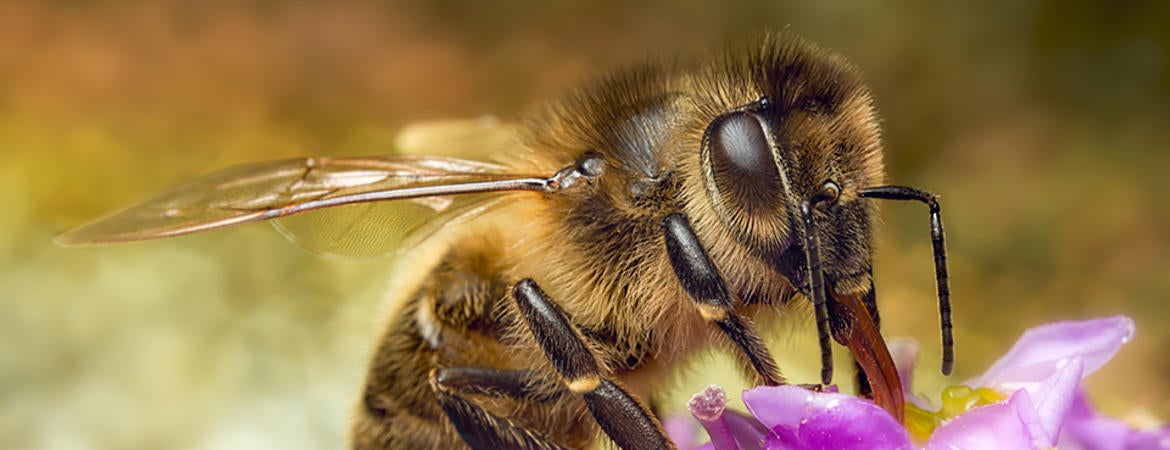Despite being called the European honey bee, Apis mellifera is also native to Africa and Asia. The name of the European honey bee is a result of European colonization. Settlers brought honey bees with them for their pollination services and ability to produce honey. Today, the European honey bee is found on all continents except Antarctica.
Honey bees are social insects that live in colonies. Each colony can consist of up to 80,000 individuals that belong to three different castes: the queen, workers, and drones. The queen and the workers are female, while the drones are male. Each colony has a single queen who is responsible for producing all of the honey bees in a hive and determines the sex of the bees through fertilization. If she wants to create a female, she fertilizes the egg. If the queen needs to produce a male drone, she does not fertilize the egg.
Like workers, queens develop from fertilized eggs, but they are fed royal jelly provided by the workers. This jelly regulates genes that control queen development. Royalty is not defined by bloodline but by access to royal food. If the queen becomes old, infertile, or dies, the workers rear new queens by providing young larvae with royal jelly. After emerging from their brood cells, the new queens fight each other to the death. The lone surviving queen then leaves the colony for her mating flight and afterwards takes over the colony from her mother. This process allows a colony to exist eternally, as all individuals can be replaced.
